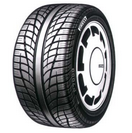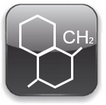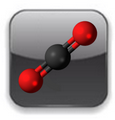SBR Styrene butadiene rubber
Rubbers > Group R
Styrene butadiene rubber | ||||||||
| Caucho estireno-butadieno | ||||||||
The styrene butadiene rubber, SBR, is undoubtedly the most widespread synthetic rubber in the world. Butadiene (CH2 = CH-CH = CH2) and styrene (C6H5-CH = CH2) are the basic monomers for the production of SBR, with the styrene content being around 23.5%, with SBR grades having a styrene content of 40 to 85%. As the styrene content increases, the polymerization product (SBR) assumes more the characteristic of thermoplastic product, so this type is always used combined with normal SBR, thus obtaining greater ease of work. Most of the SBR, about 85 to 90%, is polymerized by emulsion, with the remaining 10 to 15% being polymerized in solution. Depending on the polymerization temperature, the rubber obtained is classified as "hot rubber" if the polymerization temperature is about 55 ° C and "cold rubber" if the polymerization temperature is between 5-10 ° C. last best work characteristics. Regarding the type of stabilizers used in the polymerization, the SBR is classified as staining SBR and non-staining SBR |  | |||||||
| Styrene butadiene rubber | ||||||||
|  | |||||||
| SBR properties | ||||||||
| ||||||||
| Formula | ||||||||
| | ||||||||
| SBR Properties | ||||||||
The vulcanizates obtained from butadiene styrene rubber (SBR) have a better resistance to abrasion than natural rubber (NR), as well as better resistance to high temperatures (100 ° C) and aging, but less flexibility and elasticity at low temperatures (up to around -50 ° C). It has moderate resilience, excellent abrasion resistance, moderate tear resistance, excellent impact resistance, moderate flexural strength. In the case of high temperatures, vulcanizates of SBR have a hardening and not a softening as with the vulcanizates of natural rubber. The gas permeability presented is high but lower than that of vulcanized natural rubber while the chemical resistance is similar to that of natural rubber. Its molecular structure does not allow crystallization, SBR rubbers do not have good mechanical properties by themselves and require high volumes of reinforcing charge in the compounds. The particle size of the carbon black used plays an important role in the breaking load of the SBR rubber compounds. Compounds containing blacks of small particle size give the highest values at optimum load; With an excess of carbon black, beyond a certain level, the breaking load begins to decrease. SBR rubber has good resistance to wear, especially to one that responds more to friction fatigue mechanisms. In this sense it behaves better than Natural Rubber and hence its almost universal adoption in the treads for automobile tires. (Its high hysteresis, which manifests itself in greater heat generation, restricts its use in heavy vehicle covers, where the thickness of the tread does not allow, as already mentioned, to dissipate the heat in prejudice of the resistance and duration of the helmet of the cover). Its resistance to abrasion is increased according to the type and amount of carbon black used and can be significantly improved if SBR combined with Polybutadiene Rubber is used in the formulation. | ||||||||
SBR Thermal properties | ||||||||
Styrene-butadiene rubber retains its shape and other properties in a range of temperatures. The ability to withstand temperature is important for items that will be outdoors in all types of weather, such as tires. SBR can withstand cold to minus 65 degrees Fahrenheit and heat up to 200 degrees, covering the worst winter storms and the hottest summer sun in areas where humans live. Service temperature: -50 ° C to 90 ° C. The dynamic properties of SBR rubber limit its use for applications where the generation of heat due to cyclical stresses is important: due to its large plastic phase, SBR vulcanizates have high hysteresis. Perhaps this behavior is the biggest difference that, with respect to the dynamic properties, has the SBR rubber with respect to the Natural. This disadvantage of the SBR is critical, when it comes to thick rubber articles subjected to repetitive stresses due to the poor thermal conductivity of the rubber and its consequent inefficiency in heat dissipation. Of the two types of degradation, it can be affirmed that SBR rubber surpasses the natural one both in resistance to reversion and in resistance to ozone, and oxidative aging in general. Its resistance to ozone gives it greater possibility of use in articles exposed to the elements when there are no reasons that justify the use of another more resistant elastomer. | ||||||||
Styrene butadiene rubber electrical properties | ||||||||
| Rubber provides insulation against electrical currents, and SBR is an excellent performer in this area. Reliably adheres to metal, even if it does not stick to the fabric, as well. It is a bit permeable to gases: not perfectly permeable, but not hermetic. | ||||||||
Styrene butadiene rubber chemical properties | ||||||||
One of the factors that make SBR a suitable tire rubber is its resistance to hydrocarbons. The oil can reach the roadway of the cars and is transferred to the tires when they travel on that road. Tires can also come in contact with the oil during maintenance. Oil can mostly eat away in rubber. SBR is highly resistant to degradation caused by almost all oil. The exception is mineral oil, which SBR has little resistance. Oil is not the only material that a rubber resistance to be useful. Styrene-butadiene has a high resistance to water, important for rainy days. Resists acid chemicals and bleach, as well. SBR has a high resistance to abrasion, which means that it can deal with a large amount of wear compared to other rubbers. It is also resistant to oxidation, the process of bonding with other oxygen molecules. This produces rust on metal objects, but SBR is not prone to this type of corrosion, in general:
| ||||||||
| SBR Processability | ||||||||
Except for issues of detail or magnitude, SBR rubbers are processed in the same equipment and in the same way as Natural Rubber. The first difference is that they require less initial chewing for adequate subsequent processing (in some cases almost none) so that they allow a greater performance of the mixing equipment. Instead, they require more power and generate more heat during mixing. Since their viscosity is more constant and less sensitive to mechanical chewing, they allow to establish normalized working conditions with less risk of variation even in the face of deviations from processing. Another difference that can be established between the SBR and Natural Rubber is the lower level of stickiness in the first rubber. If it is necessary to increase it, resins should be used that favor this characteristic, in type and quantity according to the needs in process. Due to its higher load capacity (carbon black), the SBR can be mixed with inverted sequence (up-side down cycle) in less time and with optimal mixing dispersion. Its extrusion properties are superior to those of Natural Rubber due to its lower tendency to scorch (except that the level and type of carbon black influence more than rubber in this aspect). | ||||||||
| SBR Classification | ||||||||
According to the code of the International Institute of Synthetic Rubber Producers (SIS), the SBR copolymers are classified into different categories: SBR 1000 series: Copolymers obtained by hot copolymerization. SBR 1500 series: Copolymers obtained by cold copolymerization. Its properties depend on the reaction temperature and the content of styrene and emulsifier. The variation of these parameters affects the molecular weight and therefore the properties of the vulcanized mixture. SBR 1700 series: SBR 1500 extended with oil. SBR series 1600 and 1800: Carbon black is mixed with SBR 1500 rubber during production by incorporating an aqueous dispersion of carbon black with the SBR latex previously spread with oil. A master mix is obtained close to the final product after coagulation and drying. |  | |||||||
| Difference between SBR and NR | ||||||||
SBR is inferior to natural rubber for processing, tensile strength and breakage, adhesion and internal heating, but SBR is superior in permeability, aging, and resistance to heat and wear. The vulcanization of SBR requires less sulfur, but more accelerator, the reinforcing effect of carbon black is much more pronounced on SBR than on natural rubber. For use in tires, SBR is better for passenger vehicles, while natural rubber is preferable for utility vehicles and buses. SBRs extended with oil are used mainly for the manufacture of tires, belts, conveyor belts, etc.) and shoe soles; Master SBR mixes are used in the mass production of tire covers. SBR rubbers are processed in the same equipment and in the same way as Natural Rubber. Another difference that can be established between the SBR and Natural Rubber is the lower level of stickiness in the first rubber. If it is necessary to increase it, resins should be used that favor this characteristic, in type and quantity according to the needs in process. |  | |||||||
| SBR polymerization | ||||||||
The polymerization of the SBR consists of the following steps: Preparation of reagents Polymerization Monomer recovery Coagulation Drying rubber Preparation of reagents The butadiene and styrene monomers are washed with caustic soda to remove the polymerization inhibitors used in the transport of the monomers, then they are washed with water to remove any residue of caustic. The two monomers are mixed in butadiene / styrene weight ratios of 3 to 1. Soap solution It is used as an emulsifier based on the type of final product desired, different compositions are used. It is usually a soap solution of fatty acids or carboxylic acid salts, such as versatic acid or benzoic acid. Initiator Being a redox process, sodium sulfoxylate is used as a reducing agent, while the oxidizing agent is used paramentane hydroperoxide, ferrous sulfate is used as a chelator. Termination Usually the monomer conversion is less than 65%, because a converison greater than 65% causes a partial transformation of the polymer into gel. Therefore the reaction stops as soon as the desired conversion is reached. A solution of sodium dimethyldithiocarbamate is used as inhibitors. Stabilizers The stabilizers, N-phenyl-alpha-naphthylamine or Neozone D, PBNA, 2246, or Ac-5, are added to the latex before coagulation to prevent degradation by oxidation and cross-linking of the polymer during finishing and storage operations. Coagulants The polymerization generates a latex, which is a viscous mass to convert it into a solid, the latex must be coagulated with a solution of sodium chloride containing sulfuric acid. Molecular weight regulators The molecular weight of the final product is regulated by mecaptanes such as dodecyl mercaptan, which helps to limit the molecular weight causing chain transfers. Polymerization reaction The reaction happens in a series of stirred reactors, it is maintained in an inert atmosphere to avoid any cross-linking, with pressure and a specific temperature, thanks to these conditions, the butadiene stays liquid, usually the polymerization time is more or less than 10h . The reactors have a cooling system to maintain the temperature at 5 ° C. The emulsion passes through each reactor, the monomer conversion per reactor is 6%, to reach 65% pass in 10 reactors. Once 60-65% is reached a dodecyl mercaptan solution is introduced into the final reactor to stop the polymerization. An additive such as hydrazine or a derivative of hydroxylamine is used to prevent foaming when the latex is heated. The non-reactive monomers 35-40% is recovered and recycled, the butadiene is vaporized and removed by means of a vacuum pump, stored in a tank where the inhibitor is added. Once the unreacted butadiene is removed, the latex is pumped into a column in which steam is injected to remove the styrene monomer. This is cooled and sent to a settling tank, where it is separated from the washed water. The latex is homogenized, adding the antioxidant N-phenyl-alpha-naphthylamine, then adding salt and dilute sulfuric acid, to coagulate the latex and also the acid allows the copolymer to precipitate in the form of crumbs, which are rinsed with water to remove inorganic impurities. Branched Some rubbery solids are made by simultaneous polymerization and interlinking. If during polymerization each unit can add more than one other unit, then as the molecule increases in size it will branch out with many arms that will divide and interlink to create a densely cross-linked solid. |   | |||||||
SBR applications | ||||||||
Caucho de estireno-butadieno se utiliza para hacer neumáticos de coche. Tiene otros usos, pero más del 70% de este caucho sintético entra los neumáticos en los coches del mundo. Su resistencia a la abrasión y la mayoría de los aceites hace una buena opción para viajar caminos pavimentados. Aunque no es caucho natural como en otras áreas, es más fácil de procesar y puede ser mezclado con otras gomas para crear una mejor mezcla para el trabajo se está haciendo para llevar a cabo. Topes, amortiguadores y piezas antivibrantes, placas de asiento sometidas a absorción de energía, ruedas, bandajes y agitadores de impulsión, soportes para máquinas, juntas de estanqueidad y cierres de tubería, perfiles no sometidos a oxidación, tubos y mangueras para trasiego de aguas, juntas de dilatación en construcción e ingeniería civil, defensas portuarias y protecciones de muelles de descarga. Membranas y fuelles sin agresión química, fabricación de cinturones, mangueras para maquinarias y motores, juntas, y pedales de freno y embrague. En el hogar se encuentra en juguetes, masillas, esponjas, y baldosas. Entre los usos menos esperados se encuentra la producción de productos sanitarios, guantes quirúrgicos e incluso goma de mascar. - Cubiertas de neumáticos de tamaño pequeño y medio - Sector calzado - Correas transportadoras y de transmisión - Artículos moldeados - Perfiles | ||||||||
| Type | Description |
| SB | copolímero dibloque de estireno / butadieno |
| SBS | copolímero tribloque de estireno / butadieno / estireno, copolímero lineal,ramificado o estrella |
| SIS | copolímero tribloque de estireno / isopreno / estireno, copolímero lineal,ramificado o estrella |
| SEBS | estireno-etileno-butileno-estireno .Consiste en un copolímero de estireno / butadieno / estireno hidrogenado, donde |
| SEEPS | Poliisopreno hidrogenado / butadieno.Copolímeros en bloque formados por base de estireno y copolímeros de dieno |
| SEPS | Poliisopreno hidrogenado / butadieno.Copolímeros en bloque formados por base de estireno y copolímeros de dieno |
